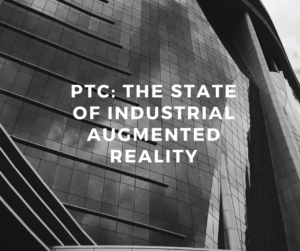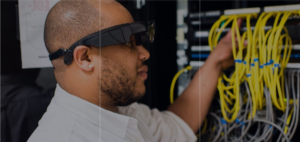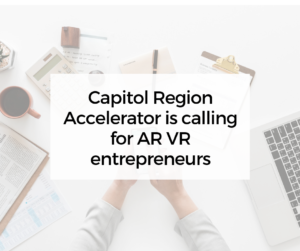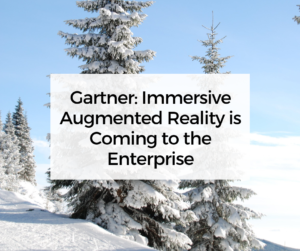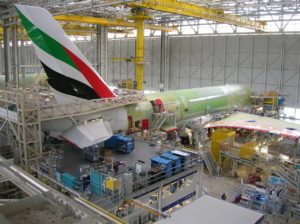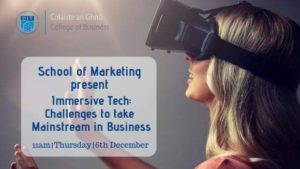“In everything we do, we’re going to have augmented information and a richer experience,” said Thomas Bittman, a Distinguished Analyst at Gartner. “We believe this will push into enterprise in a big way.
“Within three years, enterprises will be doing mixed media,” said Bittman. “These immersive technologies are lighting a fire of generational change. There’s a very real consumerization of IT. It’s starting in the home, but we believe these investments will grow into enterprise environments.”
“Virtual reality is a cool technology, but for business it is augmented reality that will get traction,” said Bittman. “All the investments in virtual reality will lay the groundwork for AR. IT and IO (infrastructure and operations) departments need to work with the business units on the art of the possible.”
The Front Lines of a Digital Transformation
The emergence of augmented reality is just one of the ways that the world of business is changing, according to Gartner. The overarching message of last week’s event is that a global digital transformation is well underway, and all of its forms will be disruptive to the way that consumers and business use technology. All of these changes will generate more data, which will need to be stored, moved and analyzed.
“The underlying theme is that the future of infrastructure is everywhere,” said David Cappuccio, a Gartner Distinguished Analyst, in Monday’s keynote. “The future is radically changed.”
Given the modest traction for virtual reality, the accelerated enterprise adoption of augmented reality was one of the more intriguing predictions from Gartner. Bittman says that AR usage will be one element of a broader shift to always-on, interactive experiences that blend the physical, virtual and “sensor-integrated” realms. He says AR will play a key role in new “overlays” of news, communications, education and training. An example: If you’re seeking to learn a specific new skill, an internet search will likely surface a how-to video on YouTube, providing a guide to the task. What if this type of demo could be incorporated into wearable goggles or glasses, providing a visual guide as an individual works on a piece of equipment or technology? Going one step further, Bittman noted the potential for displaying information on floating holographic screens, not unlike the futuristic technology from the movie “Minority Report.”
As enterprises adopt increasingly computing-intensive workloads, such as cloudbased applications and artificial intelligence, they are using more IT resources through the cloud. Download the new white paper from Stream Data Centers that explores a better way to reach the cloud, and ways to make connecting easier.
This technique could have many workplace applications in training or repairs, and provides a way for companies to quickly share domain knowledge with a distributed workforce.
“People weren’t born to use keyboards and mice,” said Bittman. “We are on a path to eliminate these artificial barriers. Immersive experiences are creating whole new challenges, and all of them create data.”
What AR Means for Data Centers
Storing virtual reality data isn’t as straightforward as dealing with traditional kinds of video. That’s because VR depends on 360-degree views that require the video content to keep running while people turn their heads and interact with virtual environments. As a result, VR and AR content may need up to 20 times more storage space than an HD video. Speed has to factor into storage, too, especially since many augmented reality applications support real-time environmental changes and viewpoints served up to users almost instantly.
VR can also require substantially more bandwidth than standard kinds of video too, up to 6 gigabytes of bandwidth per second. They observe that the fastest solid state drives available to consumers now only handle about 3.5 gigabytes per second, making them incapable of supporting many VR apps.
An early example of the challenges of delivering augmented reality content was the 2016 debut of Pokemon Go, which provided an unexpected stress test for one of the world’s largest and most sophisticated infrastructures, the Google Cloud Platform. The game’s launch generated half a billion downloads, or about 50 times more traffic than anticipated, leaving many gamers frustrated with login failures and inconsistent uptime.
While some business AR applications will be focused on corporate environments, others will be distributed in edge computing environments. An example: retail stores.
“They want to create a very immersive experience in their physical locations,” said Bittman.
Retail Uses AR for Immersive In-Store Experiences
Retail use of immersive technology was discussed earlier this year at DCD Edge in New York, where Kevin Brown of Schneider Electric discussed cutting-edge strategies for store environments. “Retailers are a fascinating case study because they’re all focused on one thing – trying to survive against Amazon,” said Brown, Senior VP of Innovation and CTO of the IT division at Schneider Electric.
Stores are seeking to create unique in-store experiences by combining augmented reality with personalization. One example is the use of “magic mirror” AR tech to create virtual fitting rooms that show shoppers how they would look wearing a new dress or suit – without having to actually try the garment on.
“This is not Star Trek stuff,” said Brown. “People are doing this now. If that’s what you’re driving toward, what’s the impact of an outage?”
That’s why Schneider and other edge-focused vendors are supporting retailers with on-site hardware to support the requirements of these applications. Brown says the IT component for these edge installations won’t be a Tier III data center, but handle resiliency through the network. “Do I need generators? Maybe we just need two hours from a lithium-ion battery.”
What About Security?
As with many new technologies, all these new AR and edge applications will need to consider security. “Historically, retailers keep security at the local level,” said Brown. “The janitor may have the keys to the IT closet.”
AR data screens will need to consider security and privacy as well, if the Internet is a leading indicator. Many web pages feature interactive elements from advertisers (yes, “Minority Report” again), which in turn have become targets for hackers.
That’s why new technologies can mean stress and challenges for IT managers, according to Gartner VP Analyst Bob Gill. “IT folks are yearning for control, and trying to get ahead of the wave,” said Gill. “Business units need governance.”
Bittman says IT teams must commence work now to secure and manage these new immersive technologies.
“Customers are going to expect it,” said Bittman. “This will be important to you. It’s coming quickly, and should be on your three-year horizon.”

